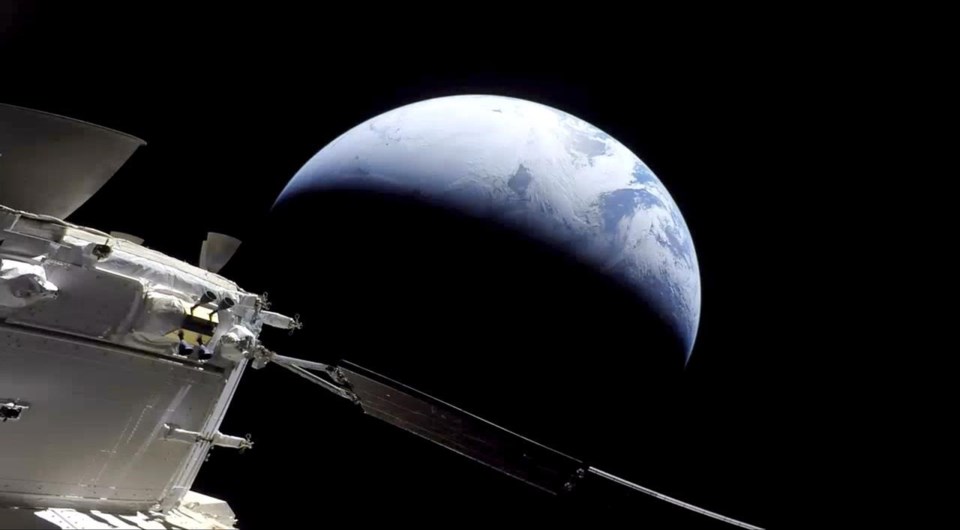CAPE CANAVERAL, Fla. (AP) — NASA’s Orion capsule made a blisteringly fast return from the moon Sunday, parachuting into the Pacific off Mexico to conclude a test flight that should clear the way for astronauts on the next lunar flyby.
The incoming capsule hit the atmosphere at Mach 32, or 32 times the speed of sound, and endured reentry temperatures of 5,000 degrees Fahrenheit (2,760 degrees Celsius) before splashing down west of Baja California near Guadalupe Island. A Navy ship quickly moved in to recover the spacecraft and its silent occupants — three test dummies rigged with vibration sensors and radiation monitors.
NASA needed a successful splashdown to stay on track for the next Orion flight around the moon, currently targeted for 2024. Four astronauts will make the trip. That will be followed by a two-person lunar landing as early as 2025.
Astronauts last landed on the moon 50 years ago Sunday. After touching down on Dec. 11, 1972, Apollo 17′s Eugene Cernan and Harrison Schmitt spent three days exploring the lunar surface, the longest stay of the Apollo era. They were the last of the 12 moonwalkers.
THIS IS A BREAKING NEWS UPDATE. AP’s earlier story follows below.
CAPE CANAVERAL, Fla. (AP) — NASA’s Orion capsule and its test dummies hurtled toward Earth on Sunday to end a 25-day test flight around the moon.
Flight controllers targeted a splashdown in the Pacific just off the coast of Mexico’s Baja Peninsula. A Navy recovery ship was positioned within a few miles (kilometers) of the intended site.
Orion rocketed to the moon from NASA's Kennedy Space Center on Nov. 16 and spent nearly a week in a wide, swooping lunar orbit, before heading home. The $4 billion demo should allow astronauts to strap in for the next lunar flyby in a couple of years.
Orion's super fast and hot return coincided with the 50th anniversary of humanity's last lunar landing, by Apollo 17's Eugene Cernan and Harrison Schmitt on Dec. 11, 1972. This was the first capsule to visit the moon since then.
NASA's Apollo landed 12 astronauts on the moon. Under this new Artemis program, named after Apollo's twin sister in Greek mythology, astronauts could be back on the lunar surface as early as 2025.
___
The Associated Press Health and Science Department receives support from the Howard Hughes Medical Institute’s Science and Educational Media Group. The AP is solely responsible for all content.
Marcia Dunn, The Associated Press



